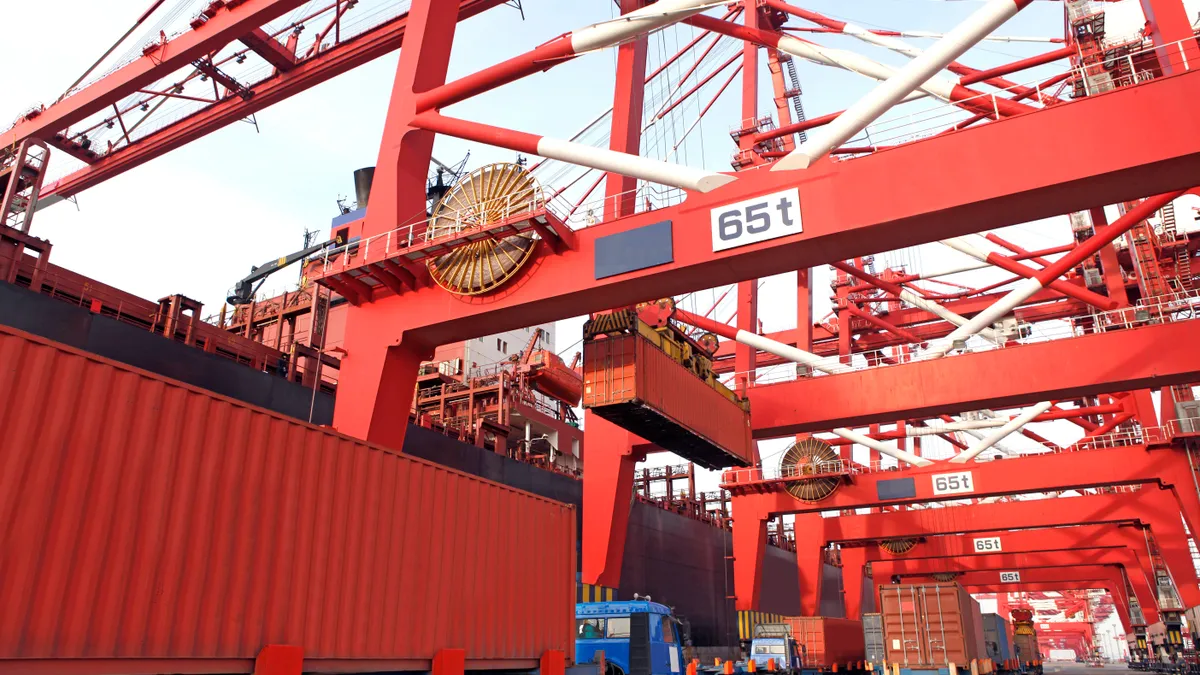Dive Brief:
- Clarksons Platou Securities and Windward suggest volume at Chinese ports are beginning to trend toward normalcy. Figures from Clarksons Platou Securities, a maritime brokerage, suggest port calls have already surpassed 2019 levels. While numbers from Windward, a maritime analytics company, show the number of calls moving in an upward direction, but still below 2019.
- "We have begun to see Chinese industrial activity increase after the slowdown brought on by the combined impacts of the Chinese New Year and COVID-19," Clarksons wrote in a research note Monday. "According to Clarksons Research Services Limited (CRSL) China represents 22% of seaborne imports, 33% of shipbuilding capacity and 77% of all scrubber retrofitting activity. The initial disruptions to these markets have begun to give way to a growing sense of improvement though unfortunately the uncertainty is spreading more globally."
- Clarksons suggested more information is needed to understand if the increase is the result of an initial backlog being cleared or a sustainable uptick in demand, leaving open the possibility of a second dip.
Dive Insight:
"The vast majority of factories are back online, with many operating at as much as 80% capacity," Freightos CMO Ethan Buchman said in a release emailed to Supply Chain Dive. "Inter-province trucking, which last week was a major pain point, has also benefited from these developments and is now operating at about 80% capacity as well."
As of last week, auto parts manufacturers in Hubei Province and electronics manufacturers in Henan Province have the lowest work resumption rates, according to estimates by Kearney.
| Province | Industry | Estimated work resumption rate |
|---|---|---|
| Hubei | Auto and auto parts | <5% |
| Henan | Electronics | 30% – 50% |
| Zhejiang | Machinery and electrical (including home appliance) | 70% – 90% |
| Zhejiang | Textile and apparel | 60% – 80% |
| Zhejiang | Auto and auto parts | >90% |
| Guangdong | Electronics | 60% – 80% |
| Guangdong | Machinery and electrical (including home appliance) | 60% – 80% |
| Guangdong | Auto and auto parts | >90% |
| Jiangsu | Electronics | >90% |
| Jiangsu | Machinery and electrical (including home appliance) | >90% |
| Jiangsu | Textile and apparel | 60% – 80% |
SOURCE: Kearney / estimations are as of Feb. 27
Quarantines, used to fight the COVID-19 outbreak throughout China, have resulted in a downturn in manufacturing output as factories can't get the workers they need. A decline in demand for ocean shipping followed and one estimate expects carriers to lose $1.9 billion as a result.
The effect on Chinese manufacturing has been significant. Last month, the country's Manufacturing Purchasing Manager's Index dropped to its lowest level since it started in 2004 — a signal of a contracting sector.
Manufacturers in the U.S. have also cited delays, longer lead times, lack of supplier visibility and difficulty sourcing parts as a result of the outbreak. But factories on in North America could see a bigger impact in one to three weeks, according to Yossi Sheffi, director of the Massachusetts Institute of Technology's Center for Transportation and Logistics.
"It takes about six weeks on the ocean to get to the United States," Sheffi said in an interview with Supply Chain Dive. "So the reduction in shipment from Chinese factories is just getting ready to hit the U.S."
Some manufacturers are straying away from forecasts to guide production and are instead relying on real-time orders to determine what to produce, and looking at their mix of products to determine if they should focus on lower-priced items. Some are also classifying products and customers by priority level in the case not all orders can be fulfilled, he said.
The governments of China, Germany, the Netherlands and Belgium have offered to step in and financially help smaller suppliers that are affected by the outbreak, Sheffi said. Assistance ensures supply chains continue to operate, or get back to normal more quickly, even if the weakest-link struggles.
Funding to fight the coronavirus is currently working its way through Congress and includes $7 billion in Small Business Administration loans for companies affected by the outbreak, according to The Washington Post.














